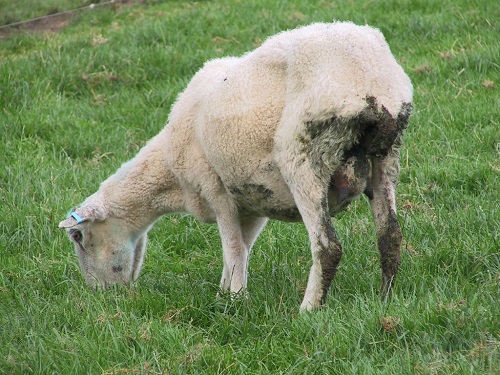

Thousands of lambs and calves have died in South Africa in recent years due to a virulent, fast-spreading Cryptosporidium and Escherichia coli disease complex. There are nearly 900 types of E. coli bacteria in existence.
Within an hour of birth, every newborn, whether it be a lamb, calf or baby human, will have up to 100 different bacterial colonies living inside its intestinal canal. E. coli are able to spread remarkably quickly and, in addition, can build up resistance to antibiotics within days. The DNA of the E. coli bacterium is not contained inside a nucleus, but floats freely inside the body of the bacterium. The DNA can be exchanged between living E. coli, but also after the bacteria have died. If one bacterium dies, it breaks open and the DNA material is released into the intestinal canal.
Other E. coli that are not yet dead then absorb those parts of that DNA and change their own DNA so that they will not die from the antibiotics a farmer is administering. This is why it’s essential that antibiotics are used responsibly.
Causes of diarrhoea
The most of the E. coli bacteria in an animal’s digestive tract are ‘good’ bacteria, yet these are responsible for most diarrhoea cases. This is because they produce both gas and endotoxins if present in the wrong ratio or in the wrong place, and this can prove fatal. The animal dies from diarrhoea, septicaemia or dehydration. E. coli can also cause abscesses in the liver and negatively affect the lungs in poor growers, among other ailments.
However, the particular diarrhoea condition that combines E. coli and the protozoal organism Cryptosporidium present in the animal’s gut. Cryptosporidium reproduce by releasing sporozoites (spore-like stages of its life cycle) in the intestinal canal. There are 26 different species of this genus. The important one for us is C. parvum. Typically, the animal will ingest a Cryptosporidium oocyte (immature egg cell), which could be present in the soil or water, or on the shoes or clothes of a handler. The oocyte then locates itself in the lining of the intestine, from where it releases sporozoites into the lumen of the intestinal tract.
Prevention
Implementing best-practice biosecurity measures, good management, and a holistic focus on health are critical in addressing all forms of diarrhoea. With this specific disease complex, prevention is particularly important as there is no vaccination against crypto. Developing an effective vaccine against a protozoan is problematic.
Treatment options are also limited, with no registered products to use against crypto in South Africa. At one stage, Wasserman imported a product that was effective, but this requires a permit for a specific client, based on a positive diagnosis of crypto from samples taken at a post-mortem.
Crypto is resilient, it can withstand temperatures of between -20°C and 60°C, and the oocytes can survive for decades in soil or water. This makes good biosecurity critical to prevent contamination of the environment in the first place.
The farmer’s first action when dealing with diarrhoea should be to immediately isolate any animal suspected of being ill; this includes isolating a lamb from its mother. Infections can even be spread by flies landing on contaminated faeces.
In addition, farmers and their staff should never work with healthy stock after handling sick animals.
Preventing dehydration is critical.
 Contact Jaguza Support
Contact Jaguza Support